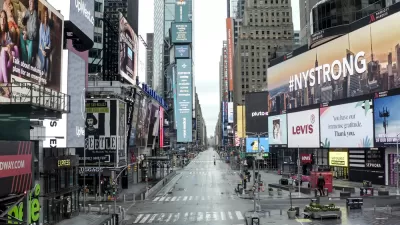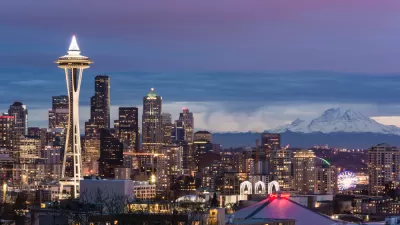After forty years in the statistical doldrums, what does Milwaukee make of a sudden, slight increase in population? Local expert and urban enthusiast Dave Steele reports.
"Milwaukee, like its baseball team, has spent the better part of the last four decades in the statistical doldrums. Population peaked in 1960 at 741,324. Since then, that number has slowly and steadily seeped away. The 2000 Census found the city's population had dipped below 600,000.
So when the US Census released a re-estimate of the city's 2006 population that showed a slight increase from 2000, it was as if the perennially losing team suddenly broke .500. Not quite enough to make the playoffs, but it sure beats being a perpetual cellar-dweller.
Of all the indicators we rely on to gauge the health and vitality of our cities, we put the most stock in population growth or decline. Median incomes, rates of educational attainment, poverty rates, crime rates – these are all important statistics that we can use to assess how well our cities are doing. But if your city is losing population it's hard for most people to argue that things are on the right track. (Although there is growing movement in some Midwestern cities that sees population loss as an opportunity as well as a challenge.)
But like a lot of statistics, demographics are basically estimates. Even the decennial census count is, at best, the most complete and accurate guess we have at the actual makeup of our communities. And the mid-decade estimates are even less reliable-no one believes for a second that there are really 602,782 souls residing in the city of Milwaukee, or that exactly 5,808 have moved in since the decade began.
We tend to fill in the data gaps with what we see with our own eyes. In Downtown Milwaukee, we see new condos left and right, so it stands to reason that the folks inhabiting these residences, the well educated and the professional, are those driving the city's modest population growth. Conveniently, this explanation allows us to tell a new story of Milwaukee: a former industrial powerhouse that's shaken off the rust and entered a new day: new kinds of jobs, a new breed of worker, a new kind of Milwaukeean.
But could there be another explanation for our sudden and unexpected uptick in population?"
Thanks to Dave Steele
FULL STORY: The New Milwaukeeans: Making Sense of Population Growth in the Cream City

Maui's Vacation Rental Debate Turns Ugly
Verbal attacks, misinformation campaigns and fistfights plague a high-stakes debate to convert thousands of vacation rentals into long-term housing.

Planetizen Federal Action Tracker
A weekly monitor of how Trump’s orders and actions are impacting planners and planning in America.

In Urban Planning, AI Prompting Could be the New Design Thinking
Creativity has long been key to great urban design. What if we see AI as our new creative partner?

King County Supportive Housing Program Offers Hope for Unhoused Residents
The county is taking a ‘Housing First’ approach that prioritizes getting people into housing, then offering wraparound supportive services.

Researchers Use AI to Get Clearer Picture of US Housing
Analysts are using artificial intelligence to supercharge their research by allowing them to comb through data faster. Though these AI tools can be error prone, they save time and housing researchers are optimistic about the future.

Making Shared Micromobility More Inclusive
Cities and shared mobility system operators can do more to include people with disabilities in planning and operations, per a new report.
Urban Design for Planners 1: Software Tools
This six-course series explores essential urban design concepts using open source software and equips planners with the tools they need to participate fully in the urban design process.
Planning for Universal Design
Learn the tools for implementing Universal Design in planning regulations.
planning NEXT
Appalachian Highlands Housing Partners
Mpact (founded as Rail~Volution)
City of Camden Redevelopment Agency
City of Astoria
City of Portland
City of Laramie





























